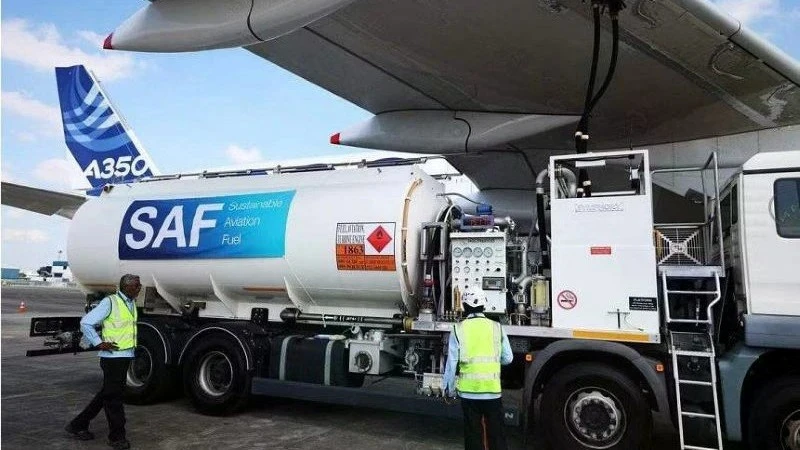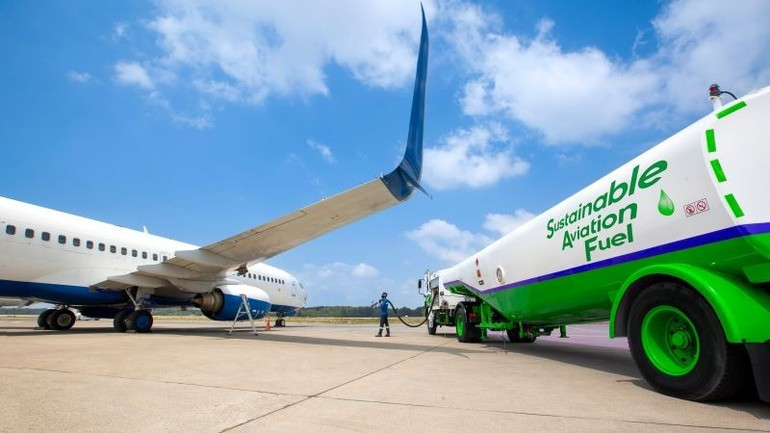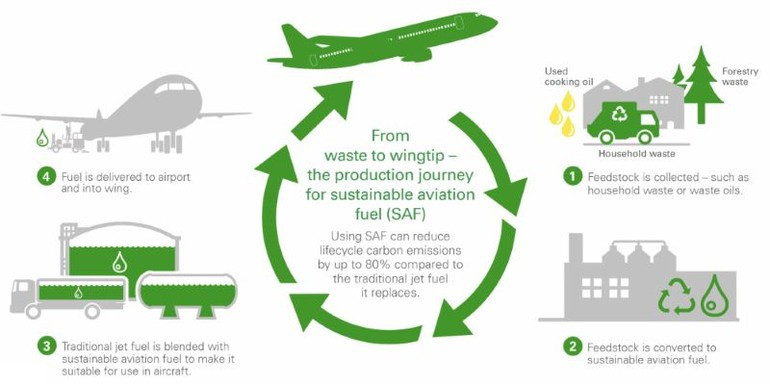Southeast Asia poised to become global hub for sustainable aviation fuel
Southeast Asia holds tremendous potential to become a global hub for sustainable aviation fuel (SAF), according to a joint research initiative between Canada and ASEAN. Countries such as Indonesia, Malaysia, the Philippines, Thailand and Viet Nam boast abundant feedstock supplies for SAF production.

The project, “Accelerating the Production of SAF from Agricultural Residues in ASEAN,” marks a significant step toward a sustainable aviation future in the region.
It is a collaborative effort by the ASEAN Secretariat, GHD, Boeing, and the Canadian Trade and Investment Facility for Development (CTIF), funded by Global Affairs Canada (GAC), and implemented by Cowater International, the Institute of Public Administrators of Canada (IPAC).
“This initiative marks a significant step in advancing ASEAN’s commitment to sustainable aviation", said Satvinder Singh, Deputy Secretary-General for the ASEAN Economic Community. “By leveraging regional resources and innovation, we are not only addressing environmental challenges but also driving economic growth and enhancing energy security. The successful completion of this project underscores ASEAN’s capacity for effective collaboration in tackling climate challenges while creating new opportunities for our communities.”.

SAF is a renewable or waste-derived jet fuel that meets stringent sustainability criteria, significantly reduces lifecycle greenhouse gas emissions, and is fully compatible with existing aircraft and infrastructure. Today’s aircraft can operate efficiently on a 50% SAF blend, but the long-term goal is to transition to 100% SAF.
Depending on the feedstock, SAF can reduce lifecycle carbon emissions by up to 80%, with even greater reductions possible in the future. Feedstocks include cover crops, non-edible crops, agricultural and forestry residues, unrecyclable municipal waste, industrial off-gases and other renewable sources.
The project conducted techno-economic assessments in Cambodia, Indonesia, Laos, Malaysia, the Philippines, Thailand and Viet Nam, examining feedstock availability, technology pathways, carbon intensity, logistics, environmental and social impacts, institutional frameworks, and financial viability. By improving economic feasibility, SAF production in ASEAN could exceed regional demand, unlocking export potential both within and beyond the region.
“SAF is the biggest opportunity to cut aviation emissions over the next 30 years,” said Sharmine Tan, Boeing’s Regional Sustainability Lead for Southeast Asia. “This research highlights Southeast Asia’s rich SAF feedstock potential, positioning the region as a key player in meeting global SAF demand. To unlock this potential, governments and industry must act decisively, harmonise sustainability policies, invest in infrastructure, and scale local production to build a robust regional SAF ecosystem. Southeast Asia has a unique opportunity to lead sustainable aviation while driving economic growth and environmental stewardship.”
By 2040, Indonesia, the Philippines, Thailand and Viet Nam are expected to become net SAF exporters, while Japan and the Republic of Korea are projected to be major importers. The research found Indonesia and Viet Nam particularly well-positioned to export SAF due to cost-effective supply chains.
Vicky Singmin, Ambassador of Canada to ASEAN also commented on the initiative stating “CTIF technical assistance supported Southeast Asia countries with a project to improve the ability of the energy sector to assess the reliability of the upstream feedstock supply and the potential for sustained use and production within the region. The recommendations from the proposed project informed on the future development and operation of the pilot areas in selected member countries (Cambodia, Laos, Indonesia, Malaysia, the Philippines, Thailand, and Viet Nam) to convert agricultural waste and residues to SAF. The project and recommendations supported the ASEAN Secretariat in ascertaining the reliability of feedstock supply for renewable fuels.”
The research identified rice straw as a feedstock with the lowest carbon intensity (CI) across many Southeast Asian countries. From a socio-economic perspective, the SAF sector promises to create jobs, upskill labour, promote gender equality and expand opportunities for marginalised communities. Feedstock supply is expected to increase primarily through improved biomass use and farming practices rather than through land expansion.

The report also emphasised practices such as mechanisation, better irrigation and R&D to optimise yields, thereby boosting feedstock supplies without exacerbating deforestation or land-use change. Beyond environmental gains, the SAF initiative highlights gender equity and economic development, creating inclusive opportunities and empowering underrepresented groups.
““The successful completion of this project represents a major milestone in ASEAN’s journey toward sustainable aviation,” said Sachin Narang, Executive Advisor for Energy and Infrastructure at GHD. “The insights gained will serve as a foundation for future SAF initiatives, investments, and policy development across the region.”
The ASEAN Secretariat and partners are calling for continued collaboration among governments, industry leaders, research institutions and investors to accelerate the transition to SAF.
The next phase will focus on key areas such as policy development, technical capacity-building and investment mobilisation to support SAF deployment and broader sustainability cooperation. ASEAN’s collective action will help shape the future of green aviation while contributing meaningfully to regional and global sustainable development goals.








